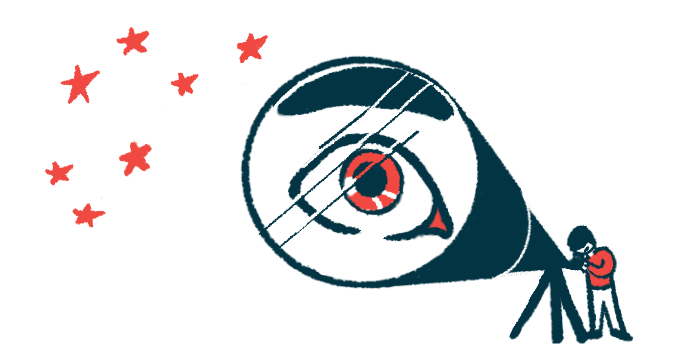Eye movement may be a helpful measure of disease severity: Review
Saccadic movements, intrusions linked to clinical severity in Friedreich's ataxia

Objective measures of eye movement abnormalities are associated with measures of disease severity in Friedriech’s ataxia (FA) and other hereditary ataxias, a new study reports.
“We have shown that characteristic oculomotor [eye movement] abnormalities can be quantified by the use of eye movement recordings in hereditary ataxias, and that they are not only useful in differentiating between distinct underlying disorders, but can, in some cases, also capture disease severity and other clinical characteristics,” researchers wrote.
The findings suggest that measuring eye movement might be useful as an objective measure of disease severity in clinical trials.
The study, “Quantitative Oculomotor Assessment in Hereditary Ataxia: Discriminatory Power, Correlation with Severity Measures, and Recommended Parameters for Specific Genotypes,” was published in the journal The Cerebellum.
Eye movement abnormalities common in hereditary ataxias
Abnormalities in eye movement are a common symptom of Friedreich’s ataxia and other forms of hereditary ataxia. Advances in video and other technologies in recent years have allowed eye movement abnormalities to be measured with more objectivity than ever before. Since many of these measures are quantifiable — that is, they can be expressed as a single number for easy comparison — they may be useful endpoints in clinical trials testing potential treatments.
An international team of researchers conducted a review of the scientific literature to assess what is currently known about quantitative measurements of eye movement in FA and other ataxias, looking at how these measures could be applied in clinical trials.
“To our knowledge, this is the first systematic literature review on the role of quantitative oculomotor parameters in hereditary ataxias,” the team wrote.
The review included data from 89 previously published studies covering more than 1,500 people with ataxia, including 178 diagnosed with FA. For each of the ataxia types included in the review, the scientists summarized a “fingerprint” of common eye movement abnormalities.
Results showed FA is marked by a strong reduction in scores on the quantitative head impulse test, a measure of the reflex that lets the eyes stay focused while the head is moving. Eye movements tended to be slower in FA compared to normative values, and FA patients also commonly had saccadic intrusions — sudden movements that disrupt where the eyes are focused.
Using the data available across all the studies, the researchers conducted a battery of statistical tests looking for associations between eye movement scores and measures of ataxia severity such as the Scale for the Assessment and Rating of Ataxia. Across the various ataxia types, a number of statistically significant associations were found.
Saccadic movements and intrusions strongly associated with clinical severity
Most associations were found in FA and in spinocerebellar ataxia types 2 and 3. For FA specifically, measures of saccadic movements and intrusions showed strong associations with measures of clinical severity. The researchers suggested that these measures may have the most promise for use in clinical trials.
In ataxia types, but not FA, eye movement measures also showed significant associations with imaging measures on MRI scans.
The researchers highlighted that, while available data suggest significant associations between disease severity and eye movement measures in FA and other forms of ataxia, there’s a lot about these associations that’s still unknown. In particular, they highlighted the scarce data on whether or how the association between eye movement and disease severity changes with time and as the disease progresses.
Better understanding these associations will be critical for moving eye-based measures into clinical trials, the researchers wrote.








